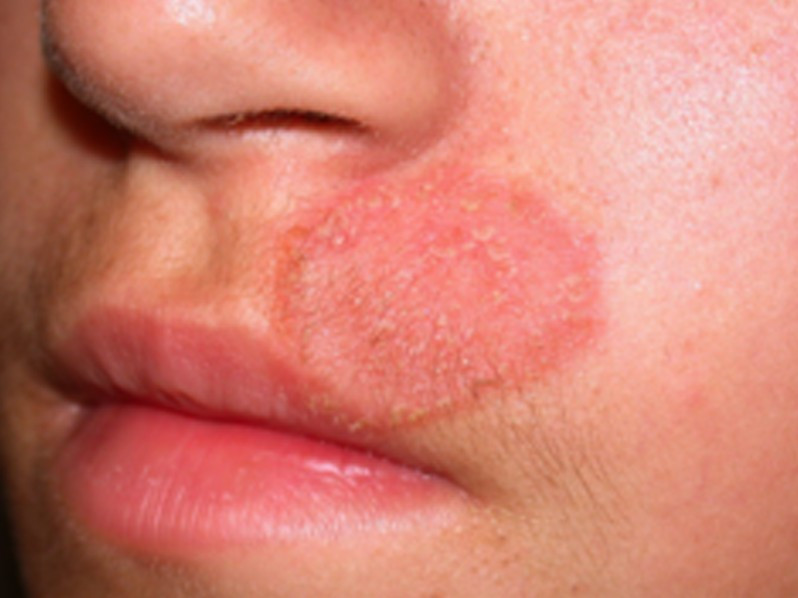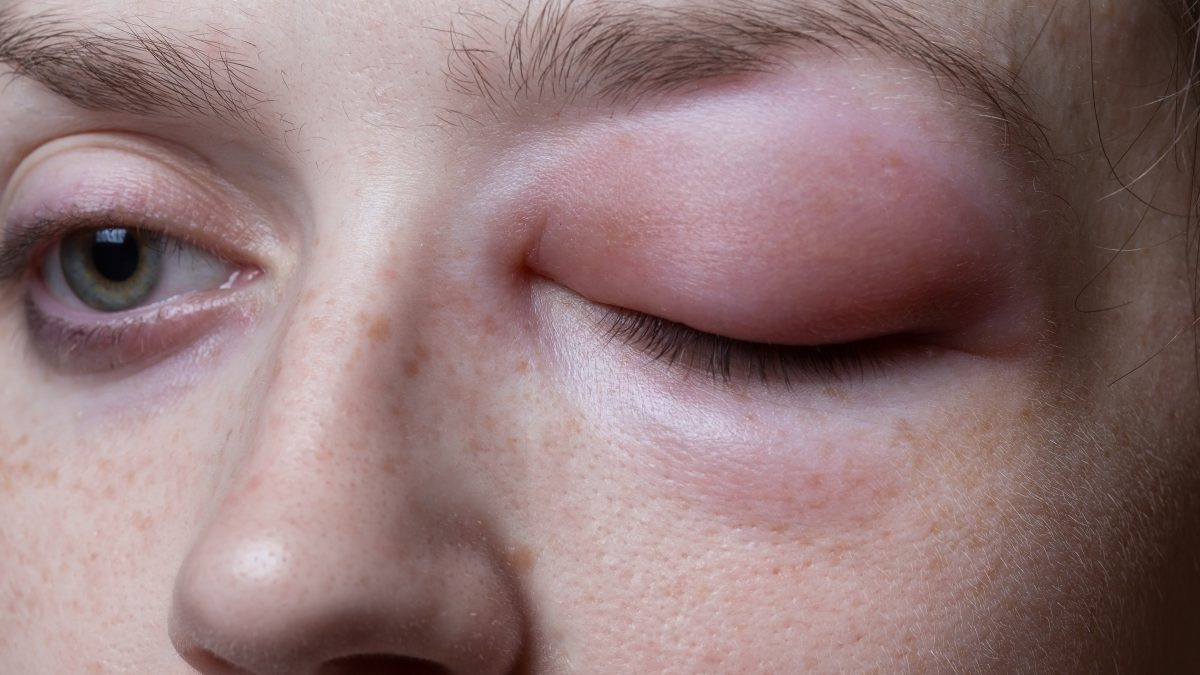Definition
Hidradenitis suppurativa, often known as acne inversa, is a chronic inflammatory condition affecting the sweat glands and hair follicles, or areas where hair grows. This disorder is marked by tiny, painful lumps on the skin resembling papules. It typically manifests after puberty and could persist for many years, intensify in severity, and significantly impact a patient's daily life while also causing psychological distress. This disease primarily manifests in the armpits, inguinal area, and genital region.
Causes
Hidradenitis suppurativa is believed to occur as a result of obstruction in the hair follicles or areas where the hair grows. Numerous factors, including hormonal factors, genetics, smoking, and excessive body weight, are associated with it. Nevertheless, this condition is not attributed to infection or poor hygiene. This disorder is also not contagious
Risk factor
There are several factors that can increase the risk of developing hidradenitis suppurativa:
- Hidradenitis suppurativa is more prevalent among individuals aged 20 to 30 years old
- Women are more susceptible than men to developing hidradenitis suppurativa
- Ethnicity or race might be a contributing factor, and in the United States, this disease is more prevalent among those of black ethnicity
- The tendency to experience hidradenitis suppurativa can run in the family
- Hidradenitis suppurativa is more prevalent and leads to more severe symptoms in those who are overweight. This skin condition is also linked to severe acne, arthritis, diabetes, metabolic disorder, and inflammatory bowel disease (IBD)
- Hidradenitis suppurativa is linked to smoking and obesity
Symptoms
Hidradenitis suppurativa may manifest in several regions of the body. The skin might develop small, itchy, and excruciating lumps that persisted for weeks or months. These papule-like lumps can subsequently multiply. In addition to manifesting as lumps, blackheads can also be observed in skin folds. These lumps typically manifest in areas with an abundance of oil glands and sweat glands, as well as on skin that rubs against one another, including:
- Armpits
- Inguinal region
- Buttocs
- Under the breast
These lumps may become larger, leak pus or fluid, with unpleasant odor. Over time, subcutaneous tunnels might develop, connecting the lumps. Exudates pus and blood, the lesions resolve extremely slowly.
Certain individuals with hidradenitis suppurativa experience mild symptoms. The condition exhibits significant variability in its severity across individuals. Among those who are overweight and smoke, the symptoms tend to be more intense and the process of recovery typically takes a longer period of time. Although individuals who have a healthy body weight and do not smoke can nonetheless have severe symptoms.
Diagnosis
Doctors diagnose this illness by thoroughly examining the symptoms and signs you exhibit, with particular attention to skin lesions and your medical history. If there is a suspicion of hidradenitis suppurativa, you may be referred to a dermatologist to confirm the diagnosis and receive more specialized treatment.
Laboratory tests are usually not taken in the diagnosis of hidradenitis suppurativa. However, in the event of pus discharge, the pus can serve as a specimen for laboratory tests. While rarely performed, this test can be utilized to determine the presence of a bacterial infection that may exacerbate the condition or impede the healing process. The patient with bacterial infection will be given a more targeted medication for patients.
Management
1. Home Care Treatments
Numerous therapeutic alternatives are available for treating suppurativa. Due to the close correlation between smoking and obesity and the severity of symptoms, it is generally recommended that patients quit smoking and reduce their weight. Individuals should also wear loose clothing to prevent irritation. Avoid using a washcloth or any similar fabric on the affected area when showering to prevent irritation. After showering, make sure to dry your body thoroughly.
2. Medicines
Typically, physicians prescribe topical antibiotics in the form of gels, creams, or ointments to prevent bacterial superinfection and reduce inflammation. Physicians may also use steroids to alleviate inflammation and pain in the affected area. If you are still experiencing pain, the doctor can prescribe analgesics to alleviate your discomfort. A physician will supervise the administration of these medications.
3. Surgery
Regarding surgical procedures, the doctor will discuss with the patient the potential for disease recurrence in relation to their existing condition and the details of the procedure that will be performed. Obtaining consent from the patient is necessary for this operation. If the lesion is confined to a specific area, the lesion can be excised along with a tiny portion of the surrounding skin tissue. Following surgery, negative pressure wound therapy may be performed to facilitate the healing process, depending on the state of the wounds in the removed area.
Complications
Persistent and severe hidradenitis suppurativa can lead to many complications such as:
- Although the afflicted region is at an increased risk of infection, pus discharge is a frequent symptom of this condition and does not always indicate the presence of an infection
- Scars and alterations to the skin's appearance. The wounds inflicted by this condition could heal, but may result in the formation of sunken skin.
- Restricted mobility. Injuries and scar tissue could restrict mobility or induce discomfort. This is particularly likely to develop if the lesions are located in the armpit or groin.
- Skin cancer. Persistent hidradenitis suppurativa has the potential to lead to the development of skin cancer, particularly when it affects the anal region.
- Swelling of the upper and lower extremities or the genitals. Regions of the body commonly affected usually have many lymph nodes. Scar tissue may hinder the circulation of lymphatic vessels, resulting in edema of the extremities and genital area.
- The impact on mental well-being and social isolation. The patients could experience embarrassment and avoid social interactions due to the location of the lesion, purulent discharge, and bad odor emanating from the lesion. This could result in the development of depression and anxiety.
Prevention
Because the exact cause of hidradenitis suppurativa is unknown, there is no sure way to prevent it. However, there are things that can be done to reduce the risk of exposure or reduce symptoms and recurrence, namely:
- Try to achieve ideal body weight and stay active, try to choose activities that will not irritate the skin
- Wear loose clothing
- Take a warm shower
- Avoid shaving hair in vulnerable areas or you could use hair removal cream
- Clean the skin folds or parts of the body that often sweat
- Don't squeeze existing lumps or pimples
- To treat pain and reduce swelling, you can use a warm compress
- Reduce consumption of dairy products, red meat and foods with high sugar content
When to see a doctor?
Early diagnosis of hidradenitis suppurativa is the first step to get effective treatment. You are advised to consult a doctor if:
- You feel pain in the lesions
- It is difficult to move your extremities due to lumps or pain
- Symptoms do not improve within a few weeks
- Symptoms recur within a few weeks of therapy
- Lumps or sores can be found in several parts of the body
- This condition often recurs
Looking for more information about skin and other hair diseases? click here!
- dr Hanifa Rahma
Hidradenitis suppurativa - Diagnosis and treatment - Mayo Clinic. Mayoclinic.org. (2022). Retrieved 16 March 2022, from https://www.mayoclinic.org/diseases-conditions/hidradenitis-suppurativa/diagnosis-treatment/drc-20352311.
Fang, H., Gao, X., Geng, S., Gu, H., Gu, J., & He, L. et al. (2021). Diagnosis and Treatment of Acne Inversa/Hidradenitis Suppurativa in China: An Expert Consensus Statement (2021 Version)#. International Journal Of Dermatology And Venereology, 4(2), 100-108. https://doi.org/10.1097/jd9.0000000000000157
Hunger, R., Laffitte, E., Läuchli, S., Mainetti, C., Mühlstädt, M., & Schiller, P. et al. (2017). Swiss Practice Recommendations for the Management of Hidradenitis Suppurativa/Acne Inversa. Dermatology, 233(2-3), 113-119. https://doi.org/10.1159/000477459
Hidradenitis Suppurativa: Symptoms, Causes, Treatments. Cleveland Clinic. (2022). Retrieved 16 March 2022, from https://my.clevelandclinic.org/health/diseases/17716-hidradenitis-suppurativa.












